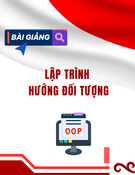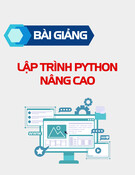
Applied Software Project Management
REQUIREMENTS
Applied Software Project
Management
1

Applied Software Project Management
SOFTWARE REQUIREMENTS
Software requirements are documentation that
completely describes the behavior that is required of
the software-before the software is designed built and
tested.
Requirements analysts (or business analysts) build software
requirements specifications through requirements elicitation.
Interviews with the users, stakeholders and anyone else whose
perspective needs to be taken into account during the design,
development and testing of the software
Observation of the users at work
Distribution of discussion summaries to verify the data gathered
in interviews
2

Applied Software Project Management
DISCUSSION SUMMARY
3
A requirements analyst can use a
discussion summary to summarize
information gathered during
elicitation and validate it through a
review.
Notes gathered during the
elicitation should fit into the
discussion summary template
The discussion summary outline
can serve as a guide for a novice
requirements analyst in leading
interviews and meetings
Discussion Summary outline
1. Project background
a) Purpose of project
b) Scope of project
c) Other background information
2. Perspectives
a) Who will use the system?
b) Who can provide input about the
system?
3. Project Objectives
a) Known business rules
b) System information and/or diagrams
c) Assumptions and dependencies
d) Design and implementation
constraints
4. Risks
5. Known future enhancements
6. References
7. Open, unresolved or TBD issues

Applied Software Project Management
USE CASES
A use case is a description of a specific interaction
that a user may have with the system.
Use cases are deceptively simple tools for
describing the functionality of the software.
Use cases do not describe any internal workings of the
software, nor do they explain how that software will be
implemented.
They simply show how the steps that the user follows to
use the software to do his work.
All of the ways that the users interact with the software can
be described in this manner.
4

5

![Phát triển website quảng bá nhà hàng Sushi: Bài tập lớn [Chuẩn SEO]](https://cdn.tailieu.vn/images/document/thumbnail/2025/20251025/youtobeusa01@gmail.com/135x160/50491761551005.jpg)






![Bài giảng Quản lý dự án phát triển phần mềm: Chương 2 - TS. Đỗ Thị Thanh Tuyền [Chuẩn nhất]](https://cdn.tailieu.vn/images/document/thumbnail/2025/20250515/hoatrongguong03/135x160/182_bai-giang-quan-ly-du-an-phat-trien-phan-mem-chuong-2-ts-do-thi-thanh-tuyen.jpg)










![Hệ thống quản lý cửa hàng bán thức ăn nhanh: Bài tập lớn [chuẩn nhất]](https://cdn.tailieu.vn/images/document/thumbnail/2025/20251112/nguyenhuan6724@gmail.com/135x160/54361762936114.jpg)
![Bộ câu hỏi trắc nghiệm Nhập môn Công nghệ phần mềm [mới nhất]](https://cdn.tailieu.vn/images/document/thumbnail/2025/20251111/nguyenhoangkhang07207@gmail.com/135x160/20831762916734.jpg)





